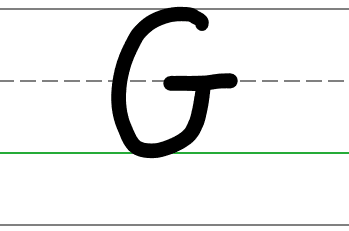What people have: 'tener' singular persons, alphabet
Learning outcomes
I can understand what I, you and someone else has in Spanish.
I can recognise and pronounce the Spanish alphabet.
What people have: 'tener' singular persons, alphabet
Learning outcomes
I can understand what I, you and someone else has in Spanish.
I can recognise and pronounce the Spanish alphabet.
These resources will be removed by end of Summer Term 2025.
Lesson details
Vocabulary and transcripts for this lessons
Key learning points
- The Spanish alphabet has 27 letters, including the letter ñ which is not in the English alphabet.
- The Spanish alphabet letter names have patterns: letter + e, e + letter + e. There are eight irregular letter names.
- The singular verb forms of 'tener' are: 'tengo' - I have, 'tienes' - you have, 'tiene' - she, he, it has.
Keywords
Ñ - 'eñe', a unique letter of the Spanish alphabet
Tener - Spanish verb 'to have, having'
Singular verb forms - verb forms for ‘I’, ‘you’ and ‘she, he, it’
Common misconception
To say 'I have', 'you have', 'she, he, it has' you need the words for 'I', 'you' and 'she, he, it'.
The verbs 'tengo', 'tienes' and 'tiene' mean 'I have', 'you have' and 'she, he, it has'. You do not need to use separate pronouns 'I', 'you', 'she, he, it'.
To help you plan your year 7 spanish lesson on: What people have: 'tener' singular persons, alphabet, download all teaching resources for free and adapt to suit your pupils' needs...
To help you plan your year 7 spanish lesson on: What people have: 'tener' singular persons, alphabet, download all teaching resources for free and adapt to suit your pupils' needs.
The starter quiz will activate and check your pupils' prior knowledge, with versions available both with and without answers in PDF format.
We use learning cycles to break down learning into key concepts or ideas linked to the learning outcome. Each learning cycle features explanations with checks for understanding and practice tasks with feedback. All of this is found in our slide decks, ready for you to download and edit. The practice tasks are also available as printable worksheets and some lessons have additional materials with extra material you might need for teaching the lesson.
The assessment exit quiz will test your pupils' understanding of the key learning points.
Our video is a tool for planning, showing how other teachers might teach the lesson, offering helpful tips, modelled explanations and inspiration for your own delivery in the classroom. Plus, you can set it as homework or revision for pupils and keep their learning on track by sharing an online pupil version of this lesson.
Explore more key stage 3 spanish lessons from the Belongings: 'tener' and articles 'un' and 'una' unit, dive into the full secondary spanish curriculum, or learn more about lesson planning.

Equipment
Licence
Lesson video
Loading...
Some of our videos, including non-English language videos, do not have captions.
Starter quiz
6 Questions
feminine
masculine



house
bicycle
coin
book
pen
Exit quiz
6 Questions



letter
letter + e
e + letter + e
letter + a



